Fast and Furriest: Meet the Fast, Fierce, and Fluffy Legends of the Wild – the Hare!
Meet the Hare
Speed. Agility. Fluff. Hares may resemble rabbits, but they’re their own wild story. With powerful legs, keen senses, and a personality all their own, hares have earned their reputation as one of the most underrated animals in the wild. Whether they’re springtime boxers or arctic survivors, there’s much more to these fast and furriest creatures than meets the eye.
Species Overview
There are over 30 recognized species of hares around the world, including the Arctic hare, European brown hare, Cape hare, and the snowshoe hare. Each species is adapted to its unique environment, from icy tundras to warm deserts.

Snowshoe Hare
(Lepus americanus)
Native to North America, this species is known for its large, snowshoe-like feet and its seasonal color change—from brown in summer to white in winter for camouflage in snowy forests.
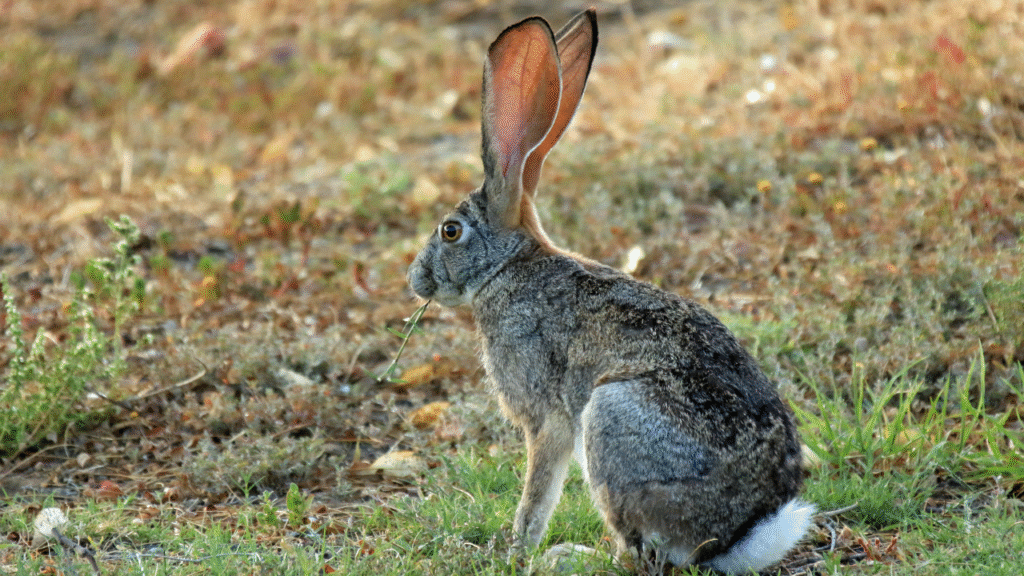
Cape Hare
(Lepus capensis)
Found throughout Africa and parts of the Middle East, the Cape hare is a desert-adapted species with long ears that help dissipate heat and a lean body built for speed.
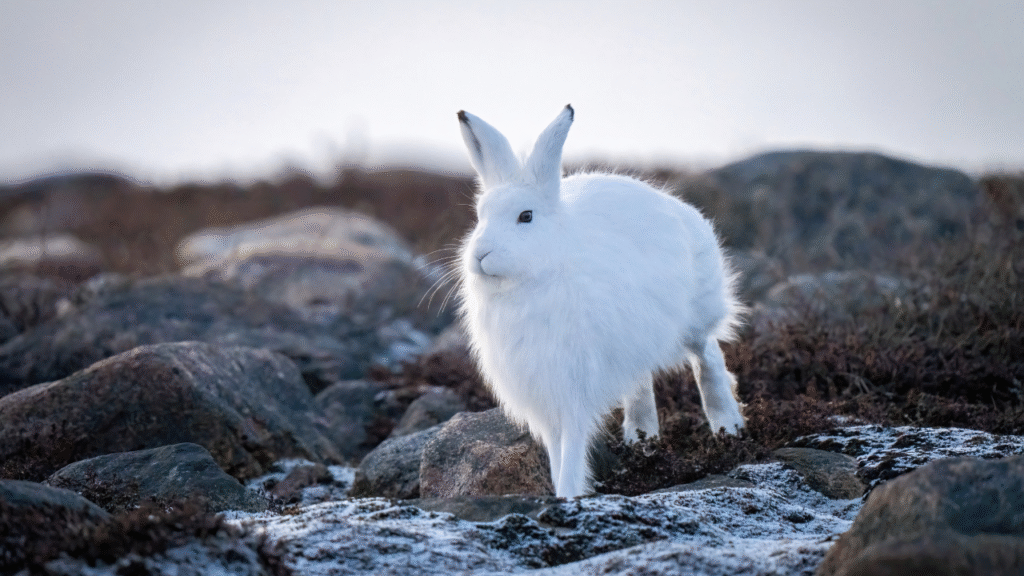
Arctic Hare
(Lepus arcticus)
Native to the coldest regions of North America, the Arctic hare has a thick white winter coat and powerful hind legs that help it bound across snowy landscapes at high speed.
Habitat
Hares live in a wide variety of habitats. Depending on the species, you can find them in grasslands, meadows, deserts, rocky hills, forests, and tundra. Unlike rabbits, hares don’t live in burrows. Instead, they create shallow nests on the ground called “forms,” where they stay hidden in plain sight.
Diet
Hares are herbivores with a high-energy diet to match their active lifestyle. They primarily feed on grasses, clover, herbs, twigs, buds, and bark. In winter, when fresh greens are scarce, hares will eat woody vegetation. Like rabbits, hares also practice cecotrophy—re-eating their droppings to maximize nutrient absorption.
Mating, Babies, and Raising Young
Spring is mating season for most hares, and it comes with a unique behavior: boxing. During this time, female hares (does) may be seen flirting with potential mates by striking males (bucks) with their front paws—a not-so-subtle way of saying “not yet!” and fending off advances before choosing their mate. After a short gestation period of about 40 days, the doe gives birth to baby hares called leverets.
Unlike rabbit kits, leverets are born fully furred and with their eyes open, ready to face the world from the moment they arrive. Since hares don’t nest underground, these early survival traits are essential. A doe typically has 3 to 4 litters per year, each with 1 to 8 young.
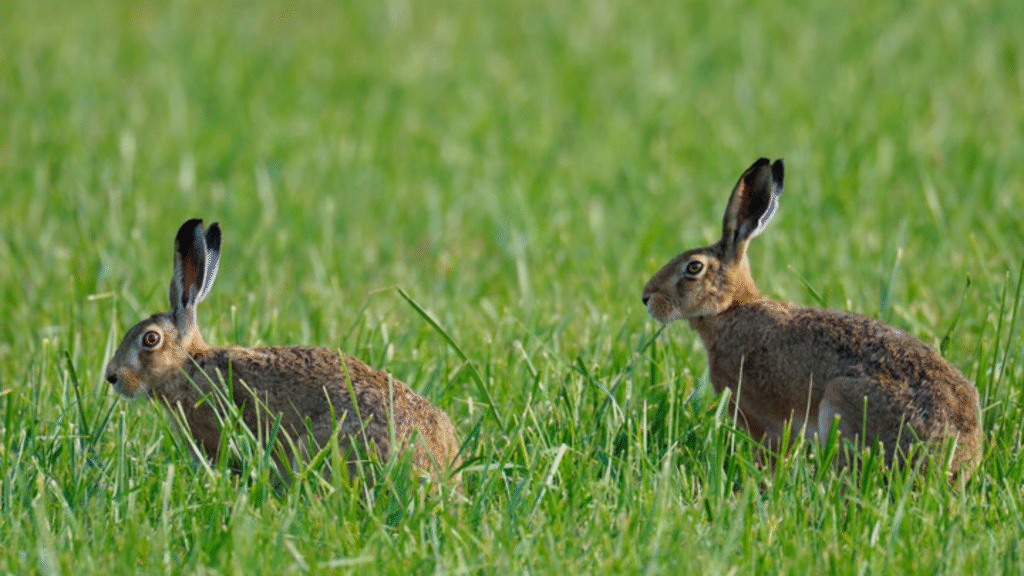
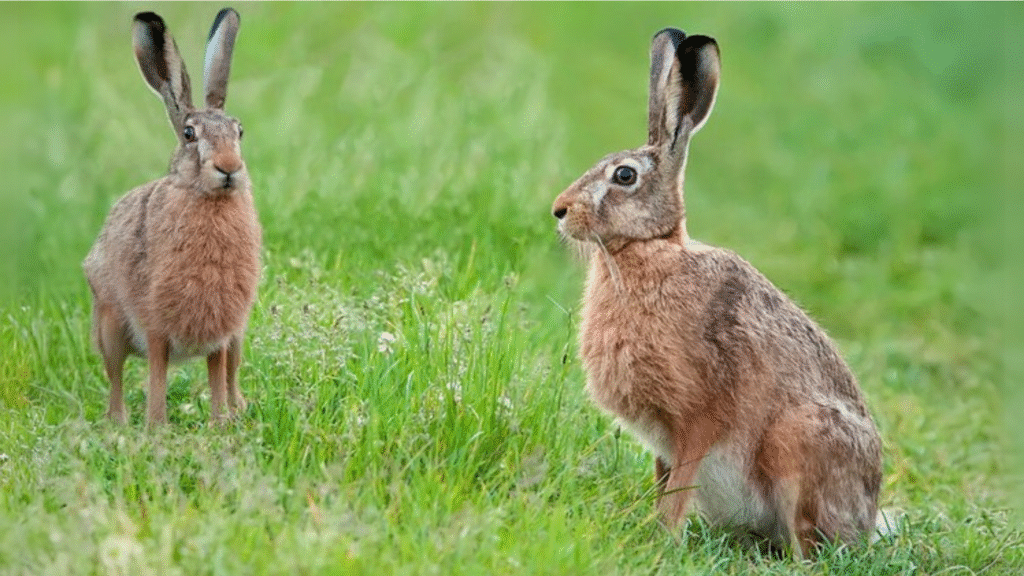

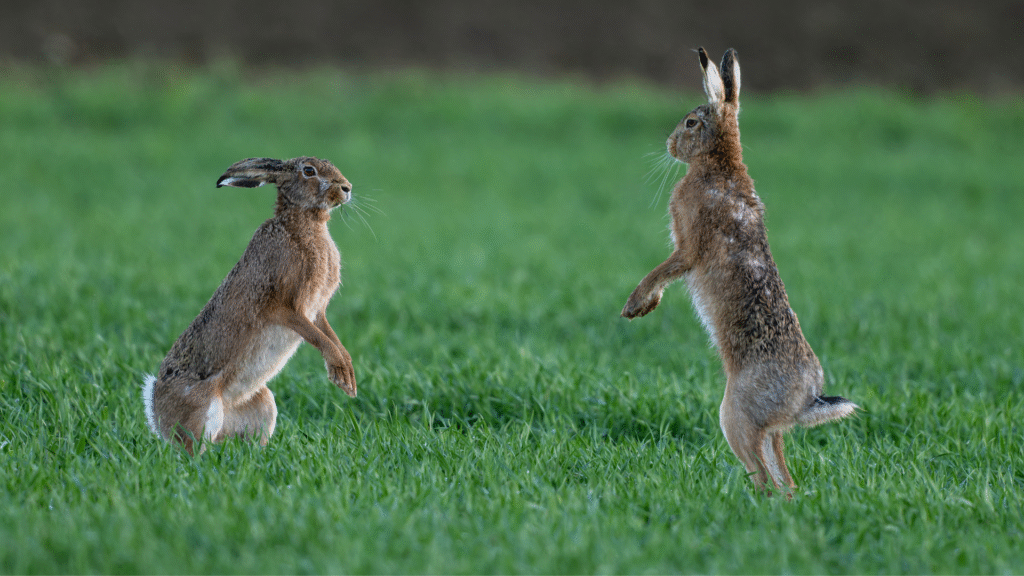
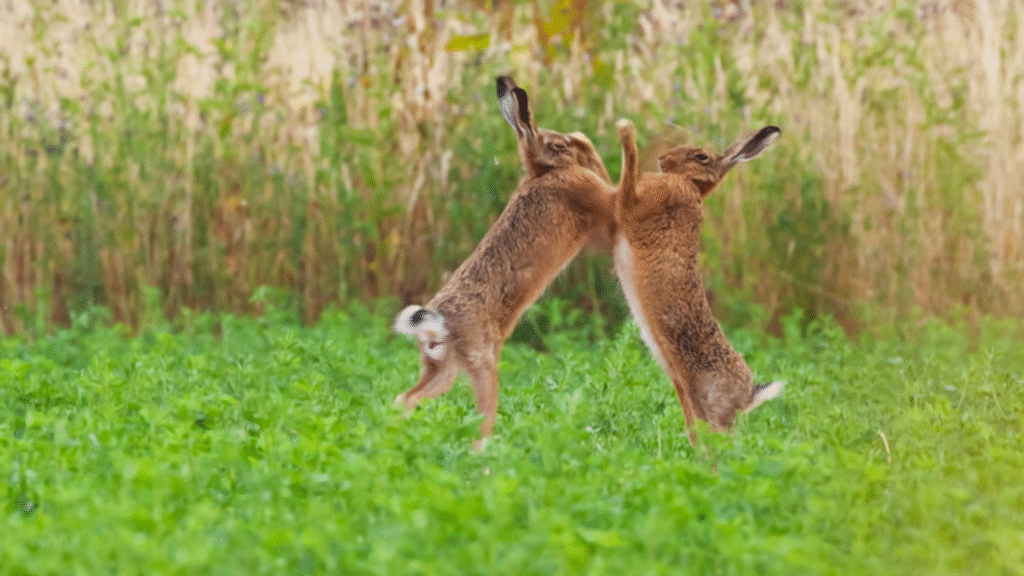
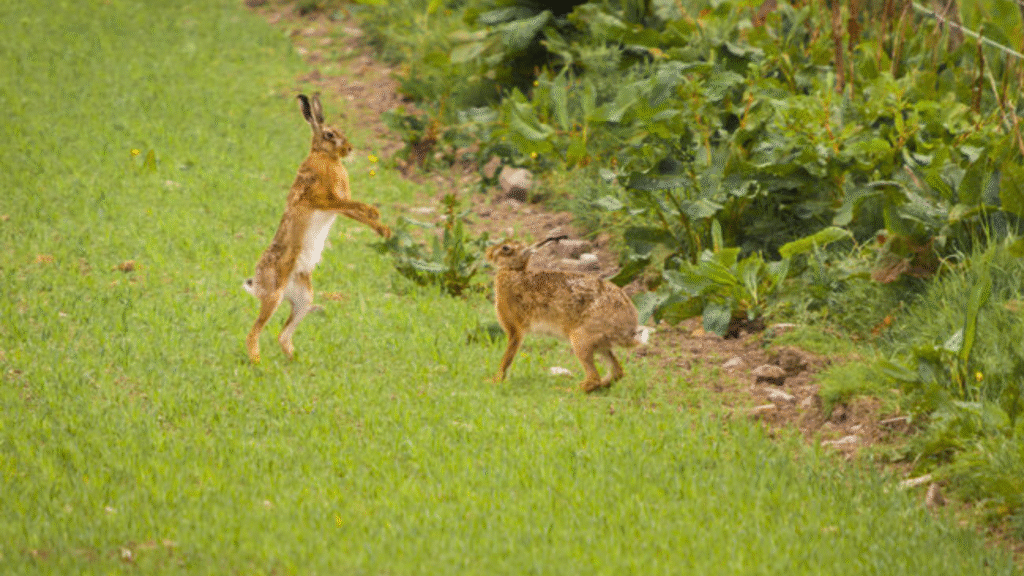
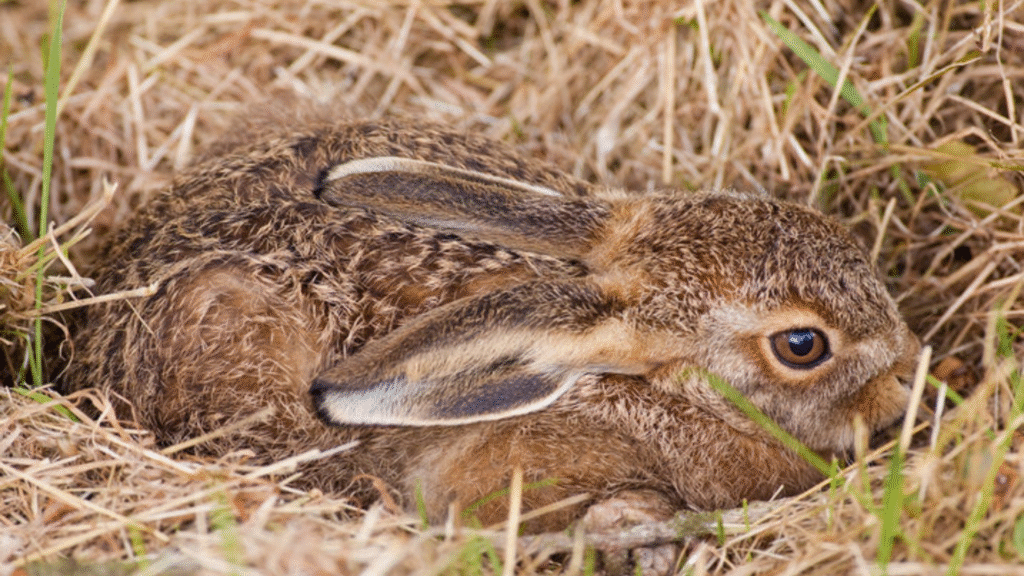
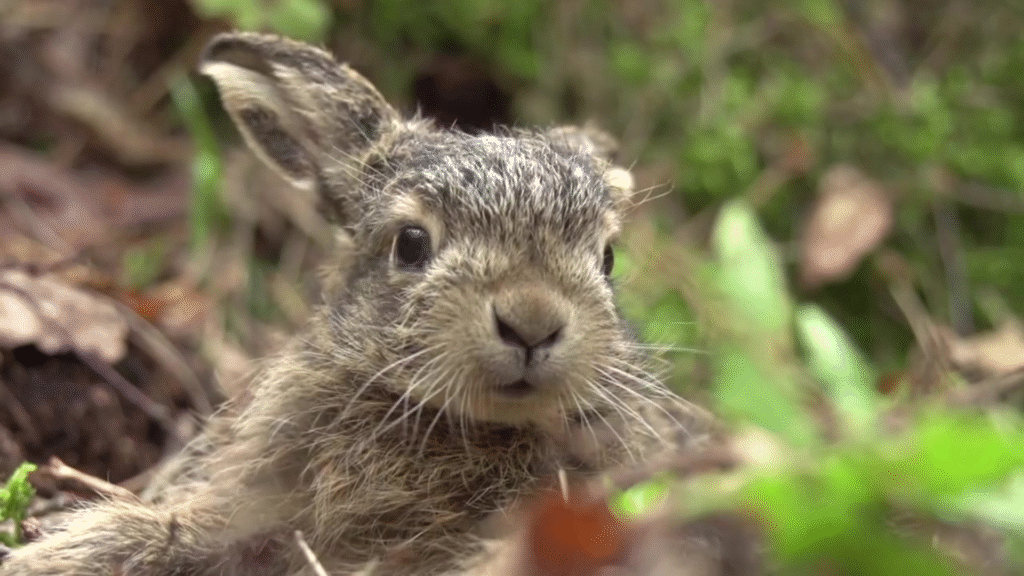
Share On Social:
Fun Facts
- Hares can sprint up to 45 miles per hour.
- They have nearly 360-degree vision thanks to the high placement of their eyes.
- Their large ears not only enhance hearing but also help regulate body temperature.
- Some species, like the Arctic hare, change color with the seasons.
- The phrase “mad as a March hare” comes from their energetic mating behavior.
- Jackrabbits? Despite the name, they’re hares!
About Hares
Scientific Family
Leporidae
Number of Species
30+ species worldwide
Habitat
Grasslands, tundra, deserts, forests, and meadows
Diet
Grasses, herbs, bark, twigs, buds, clover
Lifespan
4–5 years in the wild, sometimes up to 8 years
Unique Traits
Unique Traits
Incredible speed, seasonal camouflage, strong senses, above-ground nesting, and large eyes set high and far back for nearly 360-degree vision
Social Structure
Mostly solitary; social during mating season
Fun Fact
Hares create shallow depressions called “forms” instead of digging burrows.
Why We Love Them
Hares are often mistaken for rabbits, but they’ve got a bold, wild spirit all their own. Their combination of strength, speed, and survival savvy makes them some of the most fascinating creatures in the animal kingdom. Whether it’s their springtime antics or snowy camouflage, hares are full of surprises—and always worth a closer look.
Conclusion
Next time you spot something darting across a field or frozen in the tall grass, take a moment—it might just be a hare. Built for survival and speed, these fluffy legends of the wild have more going on than meets the eye. Stay curious, stay kind, and keep discovering more amazing animals right here on BearBunk.
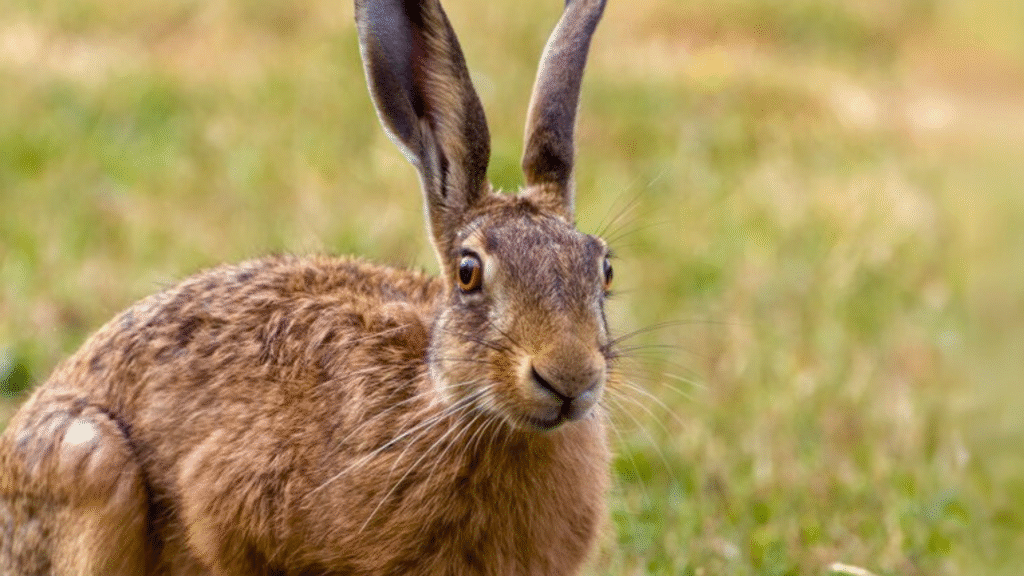
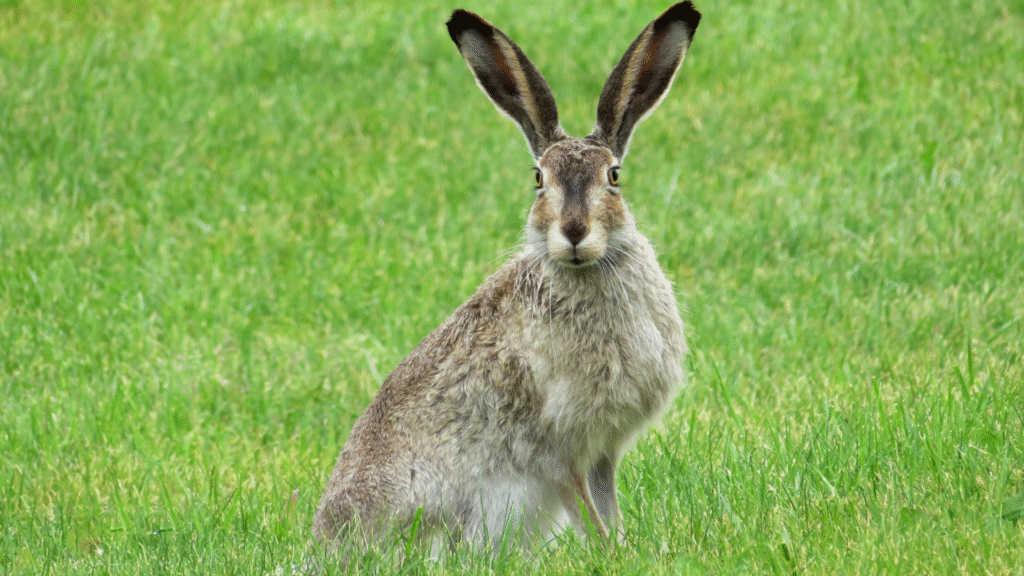

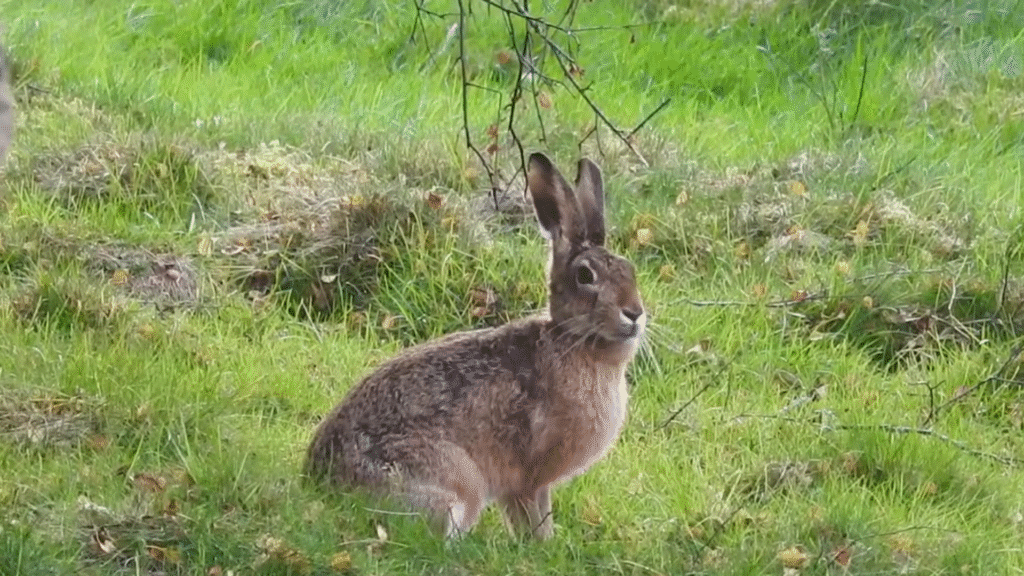

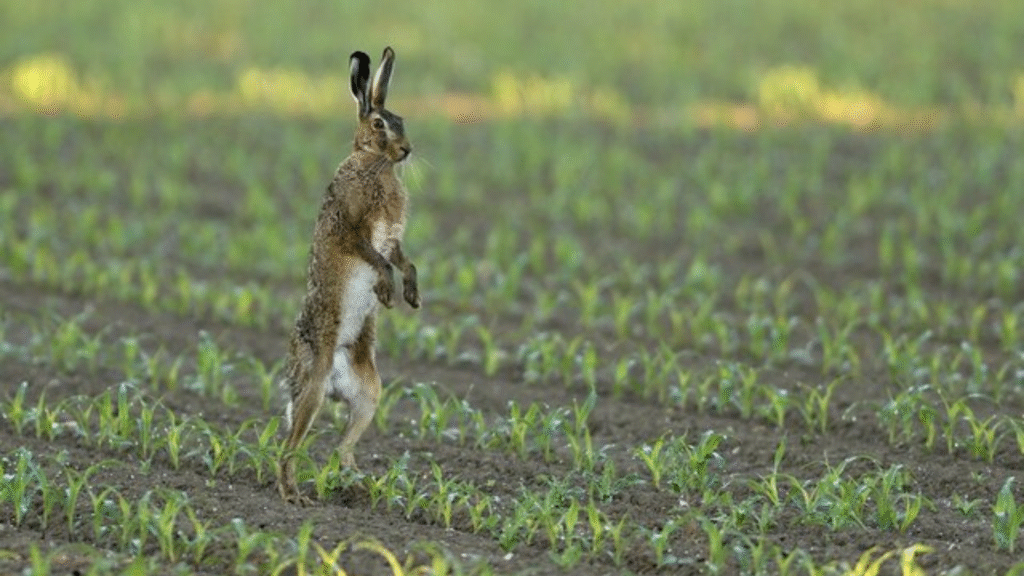
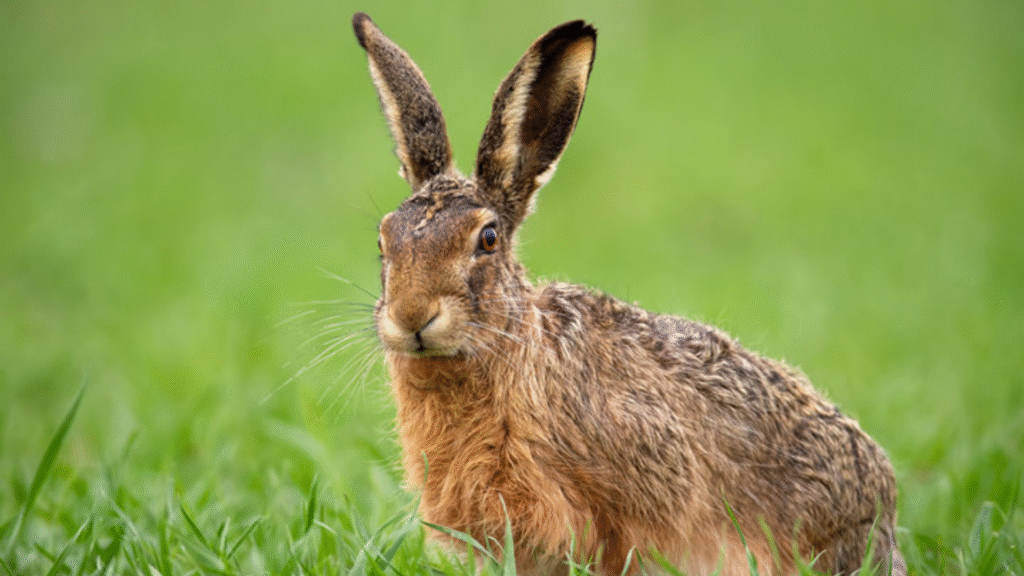


Stay wild and wonder-filled,
The BearBunk Team
Read more about: Rodents and Rabbits






Leave a Reply